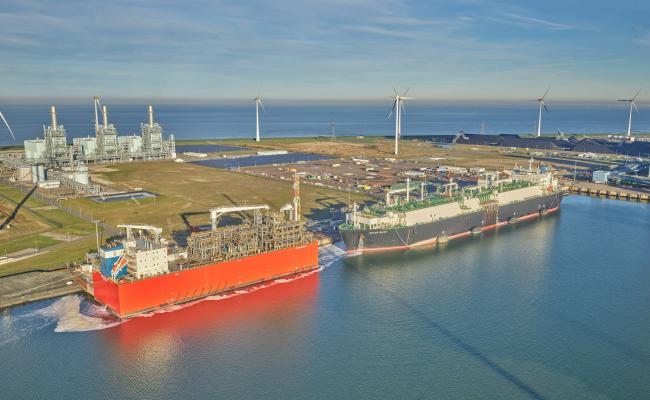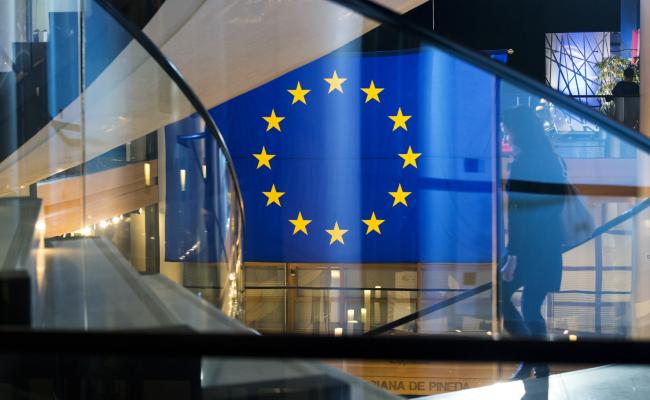EU Received 300 Shipments of LNG from Russia Since Beginning of Ukraine War
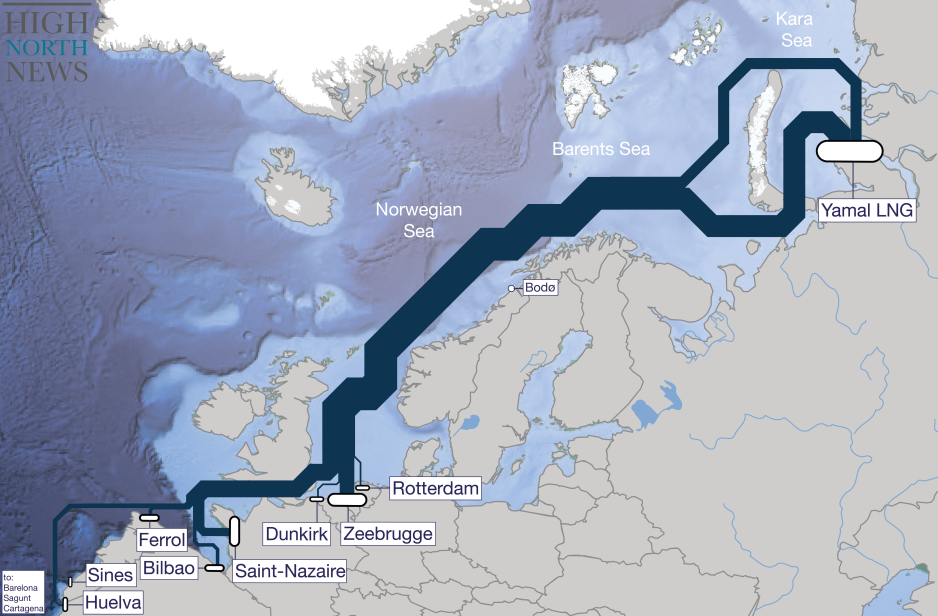
Schematic showing the flow of LNG from Yamal LNG to Europe between January 1, 2023 and June 12, 2023. (Source: Author’s own work, AIS data)
EU countries, led by Belgium, France, and Spain, have imported Russian LNG representing approximately $20 billion in revenue, since the full-scale invasion of Ukraine. Data show the pace of deliveries from the Yamal LNG project in 2023 is on track to match and possibly surpass last year’s totals.
The flow of liquefied natural gas (LNG) produced in the Russian Arctic to Europe continues uninterrupted. Shipping data analyzed by HNN show that at the current rate of delivery, totals in 2023 may surpass the figures of 2022, which themselves were up 30 percent compared to 2021. Last year EU countries received around 90 percent of LNG produced at Novatek’s Yamal plant.

Number of LNG deliveries from Yamal LNG in 2022 and through June 12, 2023. (Source: CHNL/AIS data)
In 2022 Belgium, France, and Spain combined for close to 75 percent of LNG dispatched from Sabetta, the port adjacent to the Yamal plant in the Russian Arctic.
In total the three countries account for 318 out of 348 deliveries made into the EU since January 1, 2022. Since the beginning of the war two months later, the EU has received approximately 20m tons of LNG from Russia through more than 300 shipments, representing approximately $20 billion in gas revenue for Russia.
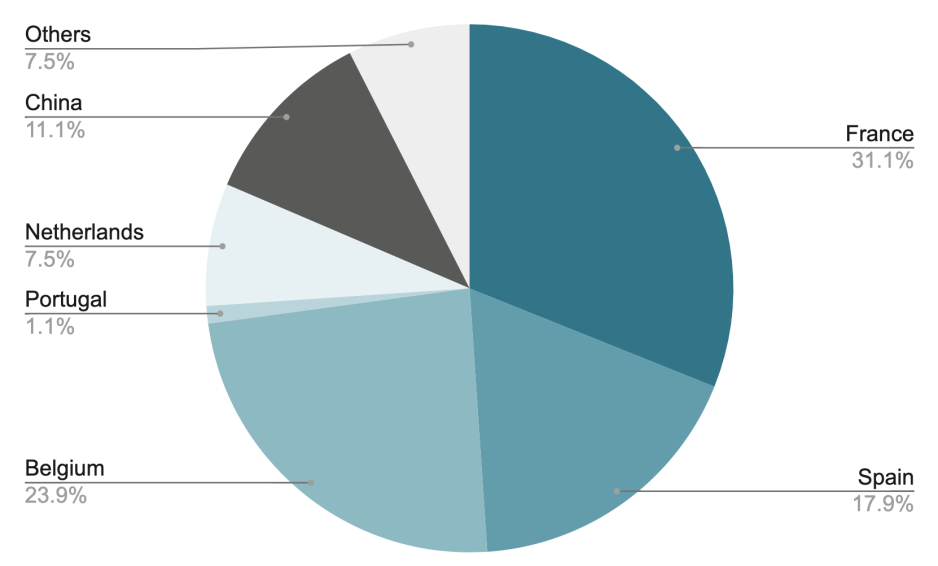
Share of Yamal LNG deliveries by country in 2022. (Source: CHNL)
Deliveries in 2023 could surpass 2022
Last year’s trend continues in 2023. During the first six months – data current through June 12 – of this year the pace of deliveries to Spain and especially Belgium has further accelerated, while supplies to France have declined slightly.
One notable exception is the Netherlands, which phased out Russian LNG deliveries at one of its two import terminals. The storage of Russian LNG is no longer permitted at the EemsEnergyTerminal (EET) in Eemshaven, according to a government spokesperson.
Only the Gate facility in the west of the country, near Rotterdam, now receives shipments from Russia. As of mid-June the Netherlands have only received five shipments this year, contrasting to 21 deliveries in 2022.
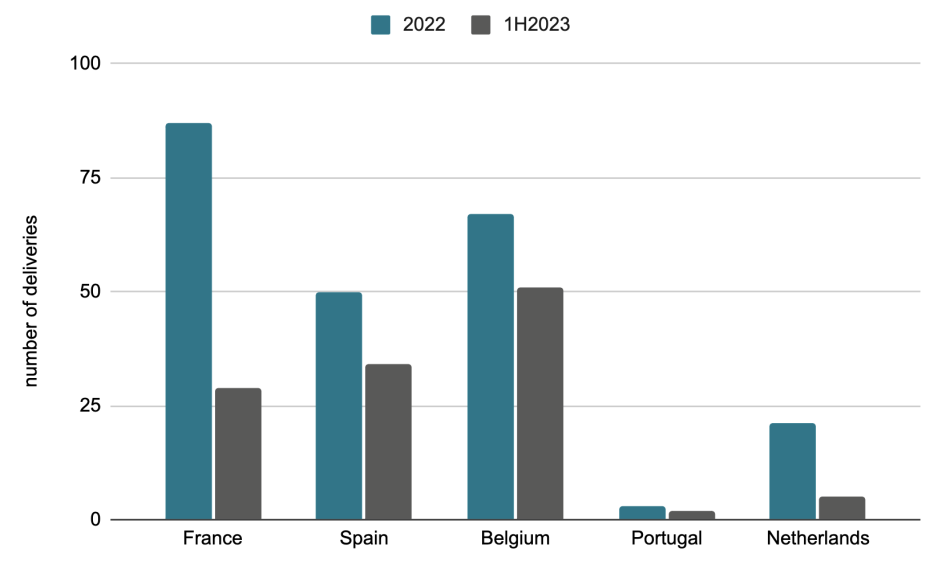
Number of LNG deliveries in 2022 compared to first half of 2023 (through June 12). (Source: AIS data)
Belgium surpasses France in 2023
Belgium has emerged as the largest recipient of Novatek’s product. A key hub is the port of Zeebrugge, where Fluxys, a natural gas transmission system operator, runs a regasification and storage terminal. The company signed a long-term storage agreement – through 2035 – with Novatek in 2015.
The deal allows for up to 8m tons of LNG, around 105 shipments, to pass through the facility.
In correspondence with HNN, a spokesperson for Fluxy’s stressed that its Zeebrugge terminal is “legally based on the principle of an open-access facility,” allowing any company to reserve capacity at the terminal.
“There are currently no sanctions in force prohibiting the import into the EU of natural gas or LNG of Russian origin. Regarding European legislation on sanctions, we are in regular contact with the competent authorities and strictly comply with the legal obligations,” the spokesperson emphasized.
Legal hurdles to end inflow
EU institutions and member states have been discussing a possible change to these “legal obligations” allowing member states to limit the inflow of Russian LNG.
While comments by EU and member state officials suggest that the issue is one of priority, no concrete actions have been announced. Consultations on a broader European natural gas package began earlier this month.
Almost all supply to Europe occurs under long-term contracts, some running well into the next decade or beyond, explains Viktor Katona, analyst at Kpler, a data and analytics firm for commodity markets.
No LNG from Russia was allowed to be stored at EET.
“All of Yamal LNG volumes are allocated under long-term offtake agreements: Total Energies (4 million tons per annum), Naturgy (2.5 mtpa), Shell (0.9 mtpa), Gazprom (3 mtpa), Novatek (2.5mtpa), and PetroChina (3 mtpa),” explains Katona.
It is not clear how easy it will be to unroll these contracts, should the EU or member states wish to reduce the inflow of LNG from Yamal. Spokespersons for Belgium, France, and Spain did not respond to requests for comment on the matter.
“European companies have been mostly taking home volumes under their long-term contracts. Considering the offtake agreements started mid-2018 and all run until 2038-2045, it would be legally difficult to apply grandfather clauses on these,” concludes Katona.
Netherlands leading the way
Meanwhile, the Netherlands has shown that it is feasible to begin to extricate oneself from the dependency on Russian LNG and gradually reduce imports.
“We made the arrangements that no LNG from Russia was allowed to be stored at EET. LNG from Russia was 30 percent of the total LNG import and is now down to 15 percent,” explains Pieter ten Bruggencate, Spokesperson for the Ministry for Climate and Energy Policy, to HNN.
The government’s efforts have proven effective with deliveries during the first six months of this year down around 50 percent over 2022.
The question of how to address Russian LNG imports to Europe will remain acute as Novatek's next LNG project, Arctic LNG 2, will come online later this year. A storage hub, intended to facilitate the flow of LNG to the continent, also arrived in the Arctic this week.


